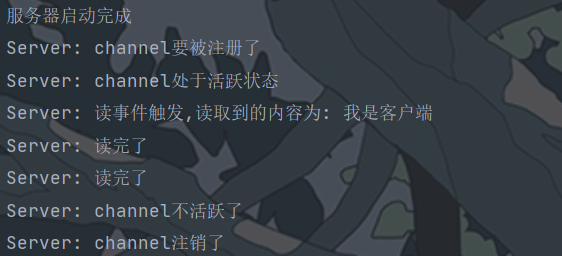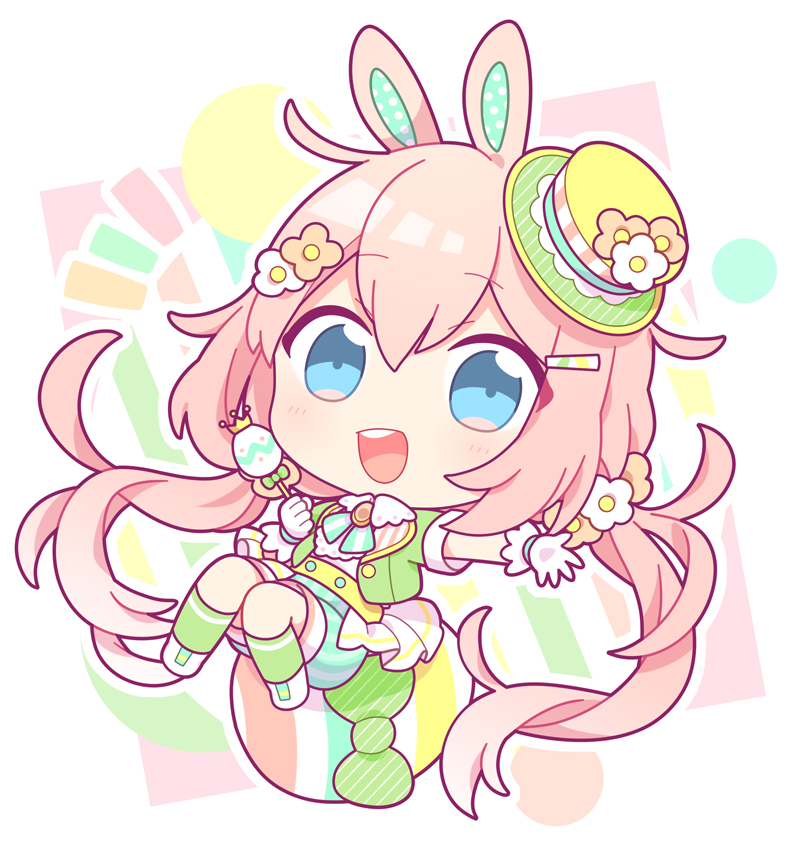![简述netty工作流程]()
简述netty工作流程
Netty核心组件介绍
- EventLoopGroup
- 看名字就知道,这是用来管理EventLoop的,同时将接收到的请求按轮询的方式转发给EventLoop
- EventLoop
- 负责将EventLoopGroup转发过来的请求(SocketChannel)注册到selector,并监听后续事件
- pipeline
- 每一个channel都有一个对应的pipeline,pipeline维护了一个双向链表,节点是ChannelHandlerContext,分出站(tail -> head)和入站(head -> tail)两个方向
- ChannelHandler
- 真正干活的,用来处理各种事件,(读,写,连接等),分入站和出站两种,对应处理入站和出站所产生的事件
- ChannelHandlerContext
- ChannelHandler上下文对象,包含了跟当前连接关联的所有资源,简单来说就是可以拿到很多东西,此外,还是pipeline中的双向链表的结点
- ChannelFuture
- Channel异步IO操作的结果,该实例可提供有关IO操作的返回结果或状态
Netty工作流程
netty采用的是主从reactor多线程模型
作为服务端而言
- 主reactor,也就是BossGrop(EventLoopGroup) 会处理连接请求,并把对应的SocketChannel交给WorkGroup(EventLoopGroup)
- WorkGroup拿到SocketChannel后,会按照轮询的方式获取一个自己所管理的EventLoop,并把它注册到该EventLoop所持有的selector上,并监听后续事件
- 监听到入站或出站事件后,会调用pipeline中的入站处理器链(InBoundHandler)或出站处理器链(OudBoundHandler)进行处理
Demo
Server
import io.netty.bootstrap.ServerBootstrap;
import io.netty.channel.ChannelFuture;
import io.netty.channel.ChannelInitializer;
import io.netty.channel.EventLoopGroup;
import io.netty.channel.nio.NioEventLoopGroup;
import io.netty.channel.socket.SocketChannel;
import io.netty.channel.socket.nio.NioServerSocketChannel;
public class Server {
public static void main(String[] args) {
EventLoopGroup bossGroup = new NioEventLoopGroup();
EventLoopGroup workGroup = new NioEventLoopGroup();
ServerBootstrap serverBootstrap = new ServerBootstrap();
try {
ChannelFuture cf = serverBootstrap
.group(bossGroup, workGroup)
.channel(NioServerSocketChannel.class)
.childHandler(new ChannelInitializer<SocketChannel>() {
@Override
protected void initChannel(SocketChannel ch) throws Exception {
ch.pipeline().addLast(new ServerInBoundHandler());
}
})
.bind(6666)
.sync();
System.out.println("服务器启动完成");
cf.channel().closeFuture().sync();
} catch (InterruptedException e) {
e.printStackTrace();
} finally {
bossGroup.shutdownGracefully();
workGroup.shutdownGracefully();
}
}
}
|
Client
import io.netty.bootstrap.Bootstrap;
import io.netty.channel.ChannelFuture;
import io.netty.channel.ChannelInitializer;
import io.netty.channel.EventLoopGroup;
import io.netty.channel.nio.NioEventLoopGroup;
import io.netty.channel.socket.nio.NioSocketChannel;
public class Client {
public static void main(String[] args) {
EventLoopGroup workGroup = new NioEventLoopGroup();
Bootstrap bootstrap = new Bootstrap();
try {
ChannelFuture connect = bootstrap
.group(workGroup)
.channel(NioSocketChannel.class)
.handler(new ChannelInitializer<NioSocketChannel>() {
@Override
protected void initChannel(NioSocketChannel ch) throws Exception {
ch.pipeline().addLast(new ClientInBoundHandler());
}
})
.connect("127.0.0.1", 6666)
.sync();
connect.channel().closeFuture().sync();
} catch (InterruptedException e) {
e.printStackTrace();
} finally {
workGroup.shutdownGracefully();
}
}
}
|
ServerInBoundHandler
mport io.netty.buffer.ByteBuf;
import io.netty.buffer.Unpooled;
import io.netty.channel.ChannelHandlerContext;
import io.netty.channel.ChannelInboundHandlerAdapter;
import io.netty.util.CharsetUtil;
public class ServerInBoundHandler extends ChannelInboundHandlerAdapter {
@Override
public void channelRegistered(ChannelHandlerContext ctx) throws Exception {
System.out.println("Server: channel要被注册了");
}
@Override
public void channelUnregistered(ChannelHandlerContext ctx) throws Exception {
System.out.println("Server: channel注销了");
}
@Override
public void channelActive(ChannelHandlerContext ctx) throws Exception {
System.out.println("Server: channel处于活跃状态");
}
@Override
public void channelInactive(ChannelHandlerContext ctx) throws Exception {
System.out.println("Server: channel不活跃了");
}
@Override
public void channelRead(ChannelHandlerContext ctx, Object msg) throws Exception {
ByteBuf buf = (ByteBuf) msg;
System.out.println("Server: 读事件触发,读取到的内容为: " + buf.toString(CharsetUtil.UTF_8));
ctx.writeAndFlush(Unpooled.copiedBuffer("我是服务端",CharsetUtil.UTF_8));
}
@Override
public void channelReadComplete(ChannelHandlerContext ctx) throws Exception {
System.out.println("Server: 读完了");
}
@Override
public void userEventTriggered(ChannelHandlerContext ctx, Object evt) throws Exception {
System.out.println("Server: 自定义事件触发了");
}
@Override
public void channelWritabilityChanged(ChannelHandlerContext ctx) throws Exception {
System.out.println("Server: channel不能写了");
}
@Override
public void exceptionCaught(ChannelHandlerContext ctx, Throwable cause) throws Exception {
System.out.println("Server: 有异常! : " + cause.getMessage());
}
}
|
ClientInBoundHandler
import io.netty.buffer.ByteBuf;
import io.netty.buffer.Unpooled;
import io.netty.channel.ChannelHandlerContext;
import io.netty.channel.ChannelInboundHandlerAdapter;
import io.netty.util.CharsetUtil;
public class ClientInBoundHandler extends ChannelInboundHandlerAdapter {
@Override
public void channelRead(ChannelHandlerContext ctx, Object msg) throws Exception {
ByteBuf buf = (ByteBuf) msg;
System.out.println("服务端的回复: " + buf.toString(CharsetUtil.UTF_8));
ctx.close();
}
@Override
public void channelActive(ChannelHandlerContext ctx) throws Exception {
ctx.writeAndFlush(Unpooled.copiedBuffer("我是客户端", CharsetUtil.UTF_8));
}
}
|
结果:
![image-20210905161142270]()
![image-20210905161014729]()



